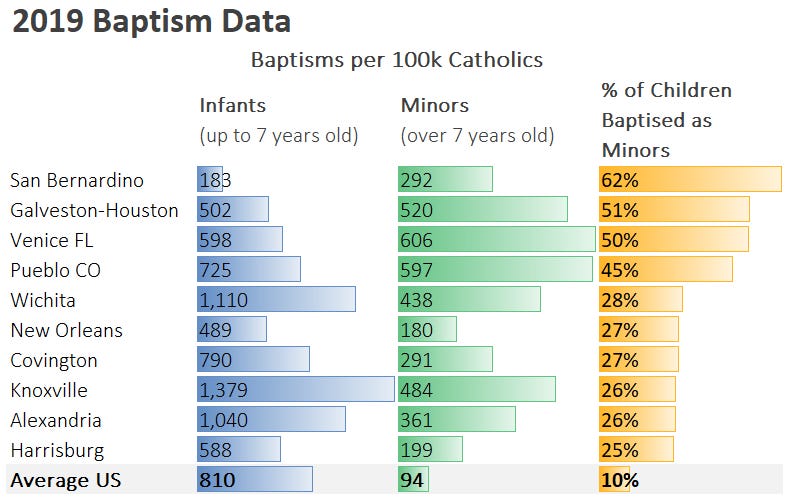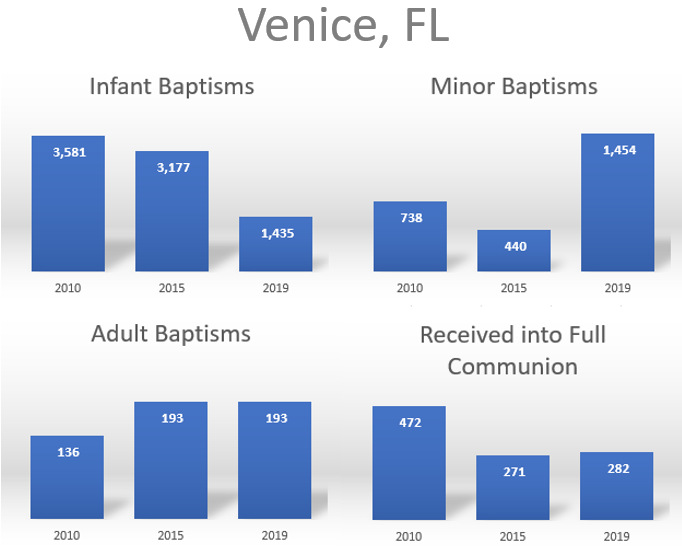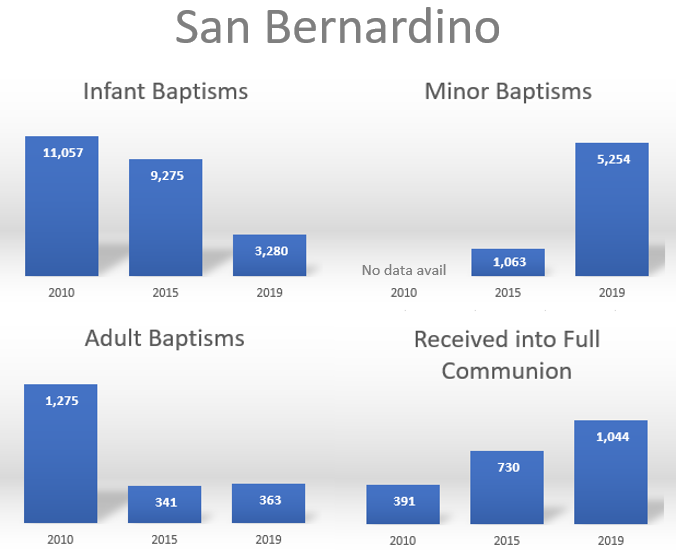By most metrics, participation in the life of the Church is trending downward in United States — Mass attendance, marriage rates, funeral rates even, are mostly on the decline.
But while the number of U.S. infant baptisms is also dropping, another category of baptism seems to be defying the general trend. The number of older children being baptized - between the ages of 7 and 17 - has risen over the last decade. In some dioceses, those baptisms actually outpaced the number of infant baptisms in 2019.
And some diocesan officials say they expect the number of “older child baptisms” to continue rising.
To be sure, the baptism of older children represents a small fraction of overall baptisms each year in the United States. But while the number of infant baptisms declined by more than 250,000 between 2010 and 2019, the number of older children baptized climbed slowly - and some dioceses have reported dramatic increases in the practice.
When children are baptized who have achieved the use of reason - which is presumed at seven years old - Church law requires that they be confirmed at the same time, and receive their first Eucharist.
In a typical American diocese, about 10% of total baptisms were of older children in 2019. But in some dioceses the share of older child baptisms was much higher.
In fact, 2019 older child baptisms outpaced infant baptisms in the dioceses of San Bernardino, Galveston-Houston, and Venice - and several other dioceses saw older child baptisms at a higher-than-average rate that year.
Karen Schwarz, a spokesperson for the the Diocese of Venice told The Pillar that diocesan officials are “aware of the increasing numbers for… the baptisms of minors,” in the diocese, which reported 738 older child baptisms in 2019, and nearly 1,500 in 2019.
Those baptisms are coupled with a growing number of confirmations for adult Catholics who were not confirmed in youth, Schwarz said.
Schwarz said the rising numbers could be attributed to population growth in the Venice diocese, but also to catechetical efforts in diocesan parishes.
“There has been a continued outreach in parishes to those who are not baptized or confirmed,” she explained.
“Parish priests are asked to address this sacramental need regularly, and to ensure that those who respond are sufficiently prepared for both baptism and confirmation. Families are encouraged to grow in their faith, together, as a family, and parishes are prepared to provide the tools for them to do so.”
“Additionally, there have been continued efforts to improve the catechism of the faithful here, especially the efforts and coordinating programs inspired by V Encuentro,” a years-long nationwide effort to better approach evangelization, catechesis, and pastoral care among Hispanic Catholics.
“Our efforts in adult catechesis have been very popular with those anxious to learn about the faith, and those efforts have likely led to increased baptism… of children,’ she explained.
Schwarz said the rise of non-infant baptisms also has to do with a growing population of migrant workers in the Venice diocese.
“Within the diocese, there are several migrant populations that are here for work purposes, and this may be the first chance those parents have had to have their children baptized, confirmed, or both, and they are responding to the encouragement and assistance of the diocese,” Schwarz said.
The California Diocese of San Bernardino reported more than 5,000 older child baptisms in 2019, compared to 3,280 baptisms of infants.
John Andrews, a spokesman for the Diocese of San Bernardino, told The Pillar that, as in Venice, the frequent baptism of older children in the California diocese is likely tied to immigration.
“We do have a large immigrant population, and the living situation of some immigrants — coming from their home country to her, the journey they’ve been, it wasn’t always possible for them to baptize their children as infants — that that part of family life got sidetracked in many cases by their effort to come to the United States.”
Catechists in the San Bernardino diocese, he said, noticed a rising trend of older child baptism nine years ago, when the diocese changed its method of tracking baptisms.
In addition to the situation of immigration, Andrews mentioned declining religiosity in the diocese.
“The thinking is that, in a nutshell, you have young families who have less reverence for Church traditions, and they’re more willing to put off seeing their children receive the sacraments…It’s kind of a sign of how young families are still somewhat engaged in the Church, but not as immediately engaged as families in the past, in terms of starting that sacramental process as soon as the child is born,” Andrews added.
“And, at the same time, we would definitely say, ‘better late than never,’ right?”








